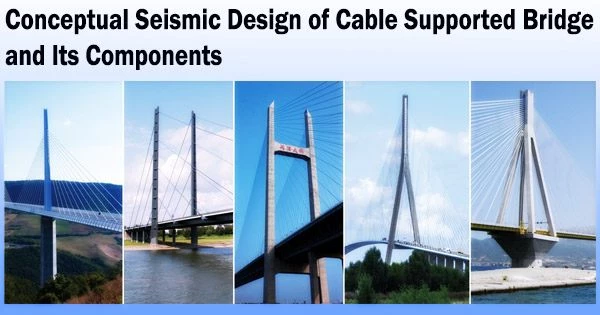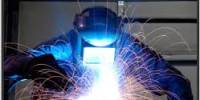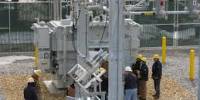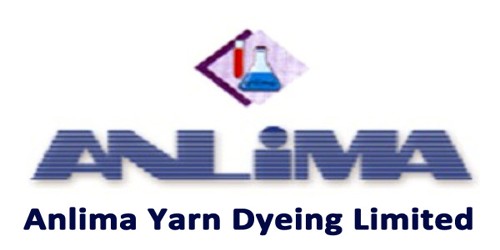The sort of cable supported bridge that needs to be created and its ideal location are the first steps in the concept design of a cable supported bridge. In this regard, the position of the cable-supported bridge is crucial. For instance, it might be advantageous to take seismic performance into account in situations when the bridge’s location is predicted to undergo earthquakes.
Most of the time, considerations other than seismic requirements are used to specify the type of cable-supported bridge before seismic design is taken into account. This may be due to the lack of precise procedures or approaches that can be used to analyze the seismic performance of various cable-supported bridge types and afterwards select the optimum choice. To put it another way, seismic design of a cable-supported bridge is utilized as a checking calculation to ascertain whether the chosen type is practicable and adequate or not.
With the exception of the fact that the design in the latter case begins with inquiry, followed by bridge diagnosis, and then the design, the conceptual seismic design of a new bridge, which is covered in the following sections, may be used for seismic retrofit design of existing bridges. Finally, it should be noted that designing an old bridge for seismic retrofitting is more challenging than designing a new one because the former has less possibilities because the former’s conditions are fixed, whilst the later has a wider range of options.
Cable Supported Bridge Conceptual Seismic Design
The conceptual seismic design of cable supported bridge might include the following:
- Determine seismic response feature of cable supported bridge
- Design to avoid collapse
- Design to remove seismic vulnerability of different bridge components
Determine Seismic Response Feature of Cable Supported Bridge
The span of cable-supported bridges is typically quite long, and they have particular seismic response characteristics such massive expansion joints, low damping, complicated vibration modes, and extended vibration periods. The majority of cables support fundamental vibrations for 2 to 8 seconds.
Due to this, not only will the bridge’s response force be much lower than it would be for a bridge with a short span, but the negative effects of P-delta will also be much more pronounced. Bigger span deflection is the reason for the larger P-delta effect in long span cable supported bridges.
These numbers are significantly below the 5% essential damping required for bridge seismic analysis. The damping ratio of a cable-stayed bridge is between 1-2%, and that of a suspension bridge is between 1.5 and 2%. As a result, it takes a while for a bridge’s vibration to stop after an earthquake. Because each part of the bridge has its own vibration period and vibration mode form, the vibration of a cable-supported bridge is very complex. These will have an impact on one another, making the vibration modes of the bridge exceedingly complex.
Due to the considerable distance between the bridge’s supports, not only will each support experience seismic vibration at a different time, but different soil types may also exist, which could greatly affect the vibrations. The distance between supports will eventually have an impact on the bridge’s seismic response behavior since they will result in varied seismic ground motion responses at each support.
The size of the major expansion joints is another factor that influences how seismically a bridge responds. The movement of the bridge structure can be started from a number of different sources. alterations in temperature, seismic forces, and service loads, as examples. As a result, there will be significant bridge movement that needs to be accommodated for and handled. Because of this, substantial expansion joints are required for cable-supported bridges in order to allow for bridge movement. Of course, this will be huge issue that designers have to deal with properly.
The Rio-Antirrio Bridge in Greece can support movements of up to 2.5 meters in typical circumstances and 5 meters in severely dangerous circumstances. The majority of cable stayed bridges are built in important places and need huge construction budgets, hence these bridges should be designed so that they have longer life spans than typical bridges.
Design of Cable Supported Bridge to Avoid Collapse
There are several ways to prepare bridges to withstand the harmful and dangerous impacts of earthquakes. Energy dissipation, multiple articulation, base isolation, improved ductility, redundancy provisions, and strengthening are some of these methods. These will be discussed in the following sections:
Energy Dissipation in Cable Supported Bridge
By supplying energy dissipation techniques, the ability of cable-supported bridge constructions to withstand earthquakes may be significantly improved. By absorbing impacts or seismic energy, these devices help the bridge structure operate better during earthquakes. The three main and most frequently used types of energy dissipation tools or dampers are metallic yielding dampers, fluid viscous dampers, and friction dampers.
Devices that dissipate energy reduce force demand as well as movements. Large fluid viscous dampers can be installed between stiffening trusses and end piers or stiffening trusses and towers to reduce displacements, while small fluid viscous dampers are fixed at appropriate locations along suspended spans to lessen vibration force.
Multiple Articulations in Cable Supported Bridge
The demand for wind performance and seismic performance being incompatible has led to the need for various articulations. In order to resist seismic forces, a bridge that is built to withstand earthquakes must be flexible, but a structure built to handle heavy wind loads must be stiff. In order to withstand wind loads and avoid tower and stiffening truss displacement, robust structural components that connect bridge towers to stiffening trusses are used. The structural parts that are stiff can endure wind loads but not seismic forces. Because of this, when an earthquake shakes the bridge, the stiff structural components will fracture and the damper devices will start to work.
As a result, the structure gains flexibility, and dampers take in some of the energy and reduce displacement between connected bridge components. In Greece, the Rio-Antirrio Bridge has used this tactic. It was tested for earthquake resistance in 2008, and the bridge successfully resisted seismic forces under normal circumstances. the viscous damper that was installed to resist earthquakes. The bridge can withstand wind loads since the black material in the illustration prevents the dampers from operating, however in the event of an earthquake, the black material will break and the damper will activate.
Base Isolation in Cable Supported Bridge
The seismic resilience of cable-supported bridges is significantly improved by base isolation. Viscous dampers are frequently used in conjunction with base isolations to lessen the harmful effects of inertia force. The most popular base isolation method used in cable-supported bridges, such as the Rio-Antirrio and Golden Gate bridges, is sliding bearing.
Another sort of base isolation that has been used in numerous bridges in the past is the rocking and rising of the bridge foundation. The base of the Rio-Antirrio bridge in Greece is built on a layer of gravestones that allows the base to move horizontally.
Improve Ductility of Cable Supported Bridge Structures
It is a good idea to increase the ductility of the towers, piers, and pylons that support cable-supported bridges. If the components are made of steel, lateral stiffening can be added to promote ductility. However, when the bridge component is made of concrete, lateral confinement is frequently used to increase ductility.
Redundancy Provisions in Cable Supported Bridge
Because the behavior of the structure during an earthquake cannot be exactly predicted and because earthquakes have a random nature, redundancy is critically important for cable supported bridges. Creating an alternative load path will provide redundancy. Restrainers, shear keys, and catch blocks can be installed to create the alternative load path. These gadgets are not only affordable, but they are also simple to create and install where they are needed.
Strengthening of Cable Supported Bridge Superstructure
This method is used for superstructure components of cable supported bridges. It is used for the connections of bridge elements that need to be designed as a capacity protector of the element because they carry the majority of loads.
Design to Remove Seismic Vulnerability of Different Bridge Components
A cable-supported bridge is made up of many different parts. A few of these components are seismically vulnerable, including the tower’s shaft, connections, and expansion joints, which may be damaged when the movement of a bridge component exceeds their design limits, and the foundation of the bridge, which may be harmed by soil liquefaction.
As a result, at the conceptual design stage, the seismic susceptibility of cable-supported bridge components must be taken into account. To select the greatest and most appropriate alternative, many designs and materials may be taken into account.
















